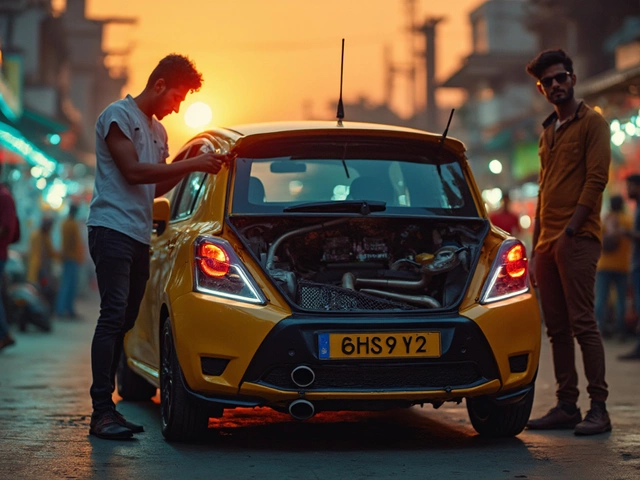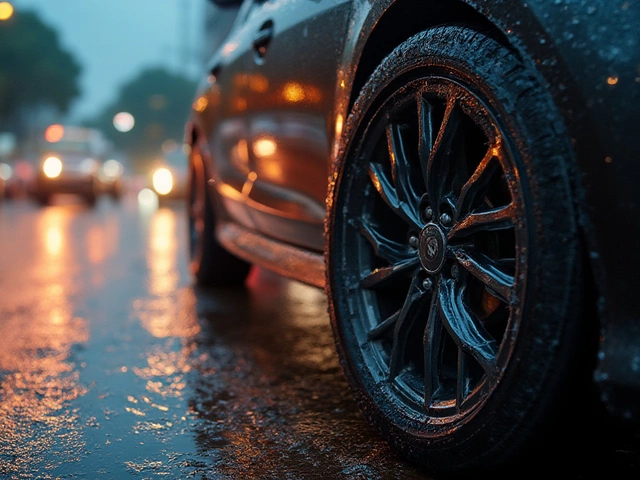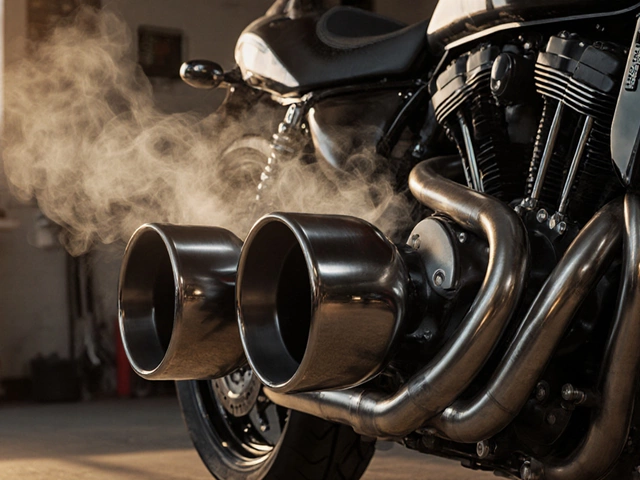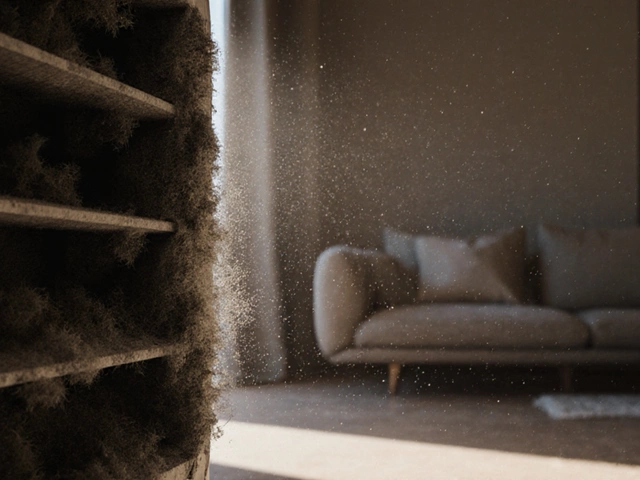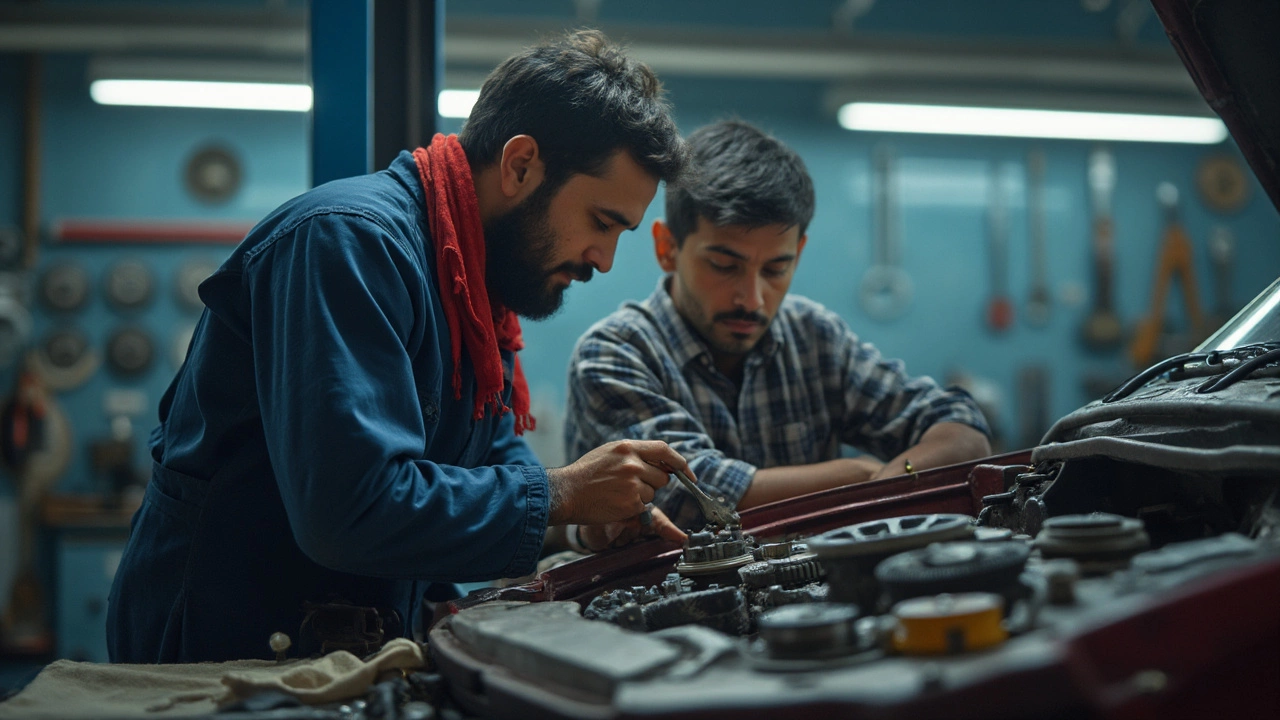
Ever hit the gas and instead of smooth power, your engine revs high and the car barely moves? That’s the annoying headache of a slipping clutch. If you’re hoping to just tighten something and make it disappear, you’re not alone—this is one of the first things people look up when their clutch starts acting up.
So can you solve clutch slip with a simple twist of a wrench? Most of the time, it’s not that easy. Clutch slipping usually means the friction material between the clutch disc and pressure plate has worn down, or there’s a problem with the pressure plate itself. On older cars with a cable system, you might get lucky because some adjustment is possible. But with most modern hydraulic setups, there’s nothing to tighten.
Instead, catching slippage early can save bigger headaches (and bills) down the road. Ignore it too long, and you could be looking at a whole new clutch kit, which isn’t cheap—not even if you do the work yourself. And trust me, having your car quit on you with your kid in tow is way worse than a surprise repair bill.
- How to Spot a Slipping Clutch
- What Really Causes Clutch Slip?
- Does Tightening the Clutch Fix Slipping?
- When Is a New Clutch Kit Your Only Option?
- Tips to Make Your Clutch Last Longer
How to Spot a Slipping Clutch
Catching a slipping clutch early can save you from bigger headaches and wallet pain. The signs aren’t hard to miss if you know what to look for. Top warning? Your car revs faster than it accelerates, like the engine’s working but the power isn’t getting to the wheels.
- Revs jump without speed: Hit the gas, the RPM climbs quickly, but the car crawls or surges. That disconnect is classic clutch slip.
- Burning smell: If you notice a sharp, hot smell—think burnt toast but worse—especially after shifting, that’s often clutch friction material cooking off.
- Shifting feels off: Gears might be harder to engage, or you hear grinding when trying to shift, even if your clutch pedal is down.
- Poor uphill performance: On a slope, the car may barely move or even roll back, even though the engine’s revving.
- Slipping in higher gears: You might expect trouble in first gear, but it’s usually 3rd and up where slip gets really obvious.
A quick test: in a manual, drive in third gear at a low speed, then floor the throttle. If the RPM shoots up but your speed doesn’t keep up, you've probably got a slipping clutch on your hands.
| Symptom | How Often Drivers Notice |
|---|---|
| Jump in RPM with little speed gain | 85% |
| Burning smell after driving | 60% |
| Hard to shift gears | 50% |
If you spot any of these, don’t wait around hoping it’ll fix itself. Slipping just gets worse, and fast—especially if you’re loading the car or towing. Getting to the bottom of it early means you might avoid total clutch failure (and an embarrassing roadside call with your kid asking, “Dad, why aren’t we moving?”).
What Really Causes Clutch Slip?
Clutch slip is more than just an annoyance—it's a sign that something in your clutch kit system isn't grabbing how it should. The most common culprit? Worn out friction material on the clutch disc. Think of brake pads that get thin and don't grip as well; the clutch faces the same wear and tear from years of driving, especially if you live in stop-and-go traffic or ride the clutch often.
But it’s not always the clutch disc. Your clutch repair might be needed if the pressure plate springs get tired and lose their clamping force. When those springs can't push the disc hard enough against the flywheel, you get slippage. Also, any oil getting onto the clutch from a rear main seal or transmission leak can cause slipping—oil and friction are not friends.
It's worth knowing that modern cars with hydraulic systems sometimes have issues with the clutch master or slave cylinder. If these don’t operate right, the clutch might not fully engage, which leads to—you guessed it—slipping. Here’s a quick breakdown of the main causes:
- Worn clutch disc friction material
- Weak pressure plate springs
- Oil or fluid contamination
- Faulty hydraulic parts in the clutch system
Lots of people miss the hydraulic issue because they’re thinking only about parts they can see. If your slipping clutch doesn't have a burnt smell or obvious signs of wear, have a look at those cylinders and the clutch fluid.
| Cause | % of Cases |
|---|---|
| Worn friction disc | 62% |
| Weak pressure plate | 18% |
| Oil contamination | 12% |
| Hydraulic failure | 8% |
Understanding these causes is the first step to knowing if your clutch can be saved or if it’s time to gear up for a full clutch kit replacement.
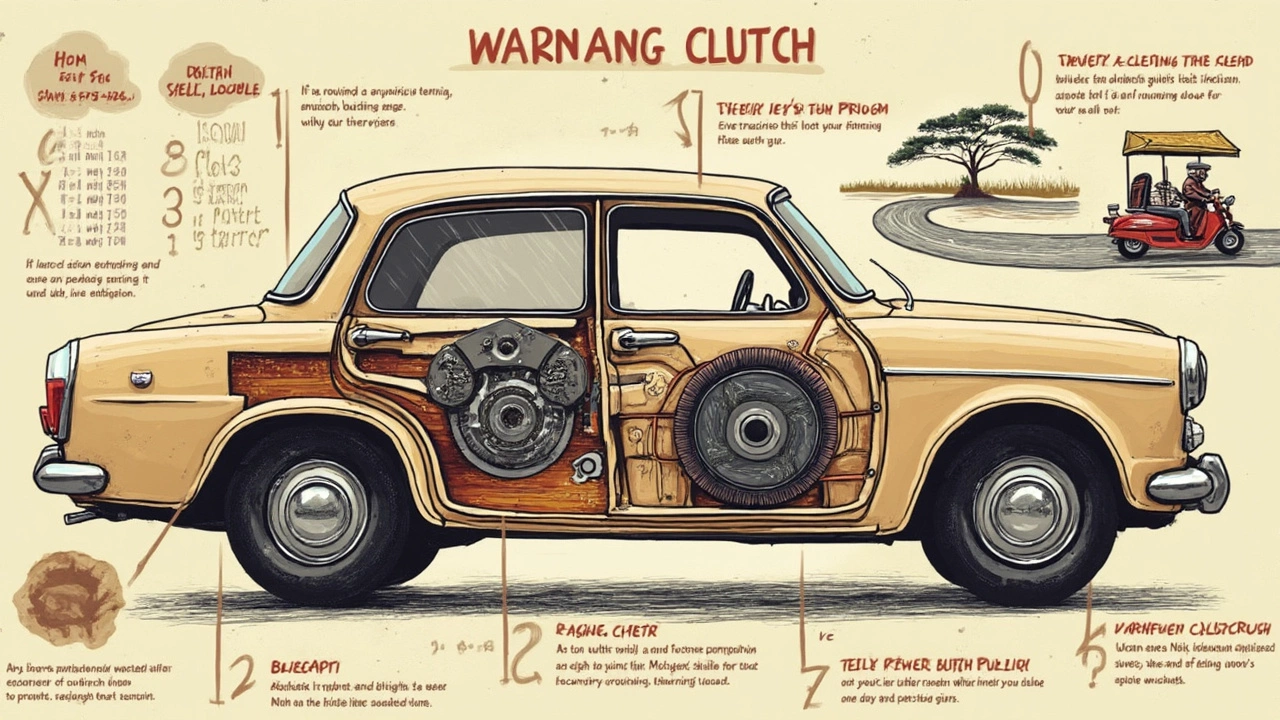
Does Tightening the Clutch Fix Slipping?
This is where things get real. The quick answer: for most cars today, you can’t just tighten something and fix a slipping clutch. It sounds like an easy solution, but sadly, it almost never works—unless you’re driving a classic or something with an old-school clutch cable.
On older rides with mechanical clutch cables, there’s sometimes a nut or screw you can twist to adjust clutch pedal play. If the cable’s a bit stretched, this adjustment can help, but only if the clutch disc and pressure plate are still in good shape. It’s not going to fix a worn-out clutch kit. Usually, you’re just buying a bit of time, if anything at all.
If your car uses a hydraulic clutch system (which most newer cars do), forget about “tightening” anything. Hydraulics self-adjust, so there’s really nothing for you to tweak. If it’s slipping, the cause is almost always worn friction material or a failing pressure plate, and you’ll need real repairs—no amount of adjusting will bring a toasted clutch back to life.
Here’s when an adjustment could help, and when it’s just wishful thinking:
- Mechanical/cable clutch: Pedal travel feels way off, clutch grabs too quickly or too late, and you still have at least some friction left. You might adjust the cable to spec, but it won’t fix serious wear.
- Hydraulic clutch: No adjustment possible! If it’s slipping, there’s a bigger problem inside the bellhousing.
One real-world example: Some older Hondas and pickups let you adjust pedal free play. If clutch slippage started right after someone tinkered with the pedal, an adjustment might fix it. But if you’ve put 80,000 miles on the original clutch, tightening the cable won’t fix the root problem.
Now for some quick numbers—based on shop records, less than 5% of clutch repair jobs are solved with a simple pedal adjustment. For the other 95%, drivers are looking at a new clutch kit.
When Is a New Clutch Kit Your Only Option?
There’s a point where no amount of adjusting, bleeding, or praying will stop your clutch from slipping. When that time comes, your only real fix is swapping out the whole clutch kit. But how do you know you’re there?
If you smell a burning, metallic odor (especially after stop-and-go traffic), your clutch pedal feels spongy or stays on the floor, or the engine revs up without matching forward motion, it’s usually game over for the old clutch. If you’ve already tried adjusting the clutch cable (and most cars now are hydraulic, meaning you can’t adjust them anyway), and it’s still slipping, you’re dealing with worn-out parts—typically the clutch disc or pressure plate.
Here’s when you truly need a new clutch kit:
- The clutch disc is worn down—less friction means more slip. Most clutch discs last around 60,000 to 100,000 miles, depending on how you drive.
- Pressure plate springs have lost their strength, meaning less force keeping things locked together.
- Hydraulic leaks that can’t be fixed by topping up fluid—if there’s brake fluid on the clutch pedal or under the car, something’s blown.
- You see actual clutch material or dust near the bellhousing, or worse, metal shavings.
If you’re curious about costs, here’s a quick look at average prices in 2025 for a clutch repair across popular car types:
| Car Type | Parts + Labor |
|---|---|
| Compact (like Honda Civic) | $700 - $1,100 |
| Midsize Sedan (Toyota Camry) | $900 - $1,400 |
| Pickup Truck (Ford F-150) | $1,000 - $1,800 |
One more thing: if you’re already pulling everything apart to swap the clutch disc, throw in the pilot bearing and release bearing from the new clutch kit. Most kits include these, and skipping them is just begging for a do-over repair.
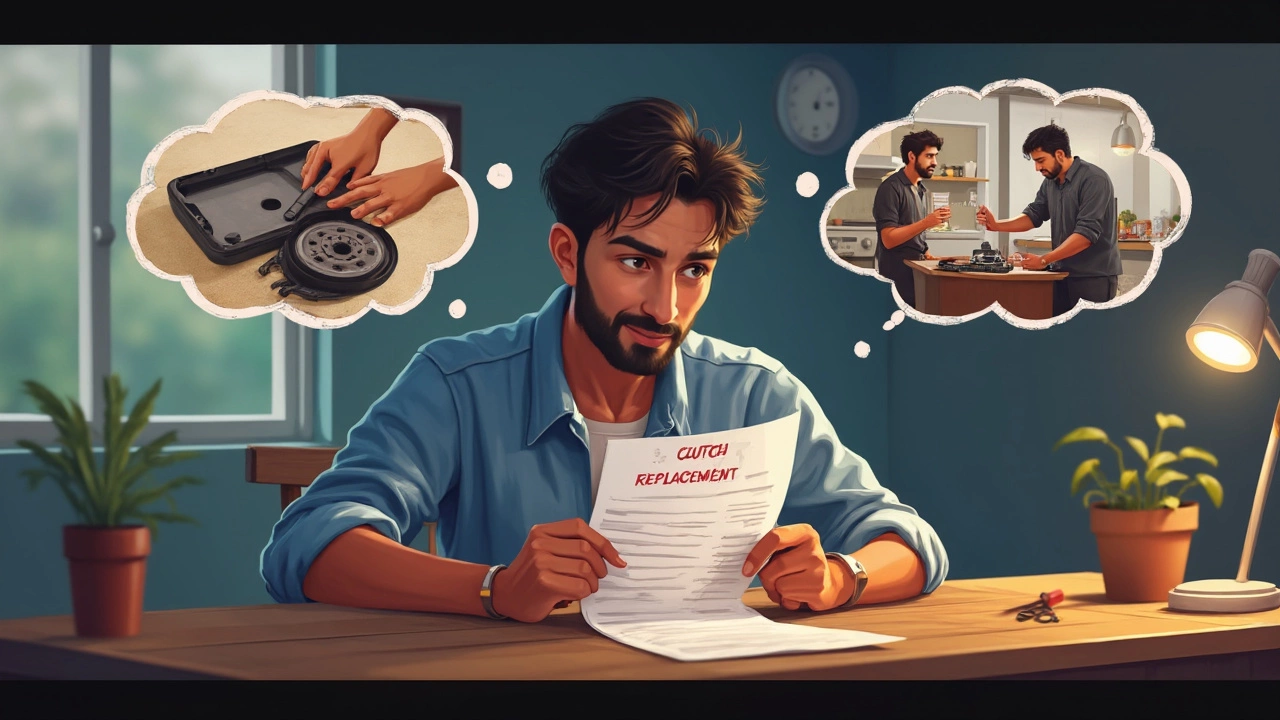
Tips to Make Your Clutch Last Longer
Want your clutch to last more than just a few years? Most folks burn through their first clutch kit way faster than they should, mostly because of simple habits that mess it up. Here’s what you can actually do to help your clutch go the distance.
- Don’t ride the clutch pedal. Keep your foot off the pedal when you’re not shifting. Even light pressure can wear out the clutch disc before you know it.
- Use neutral at stoplights. Sitting at a red light with the clutch pressed in might feel easier, but it puts extra strain on the release bearing. Stick it in neutral and give your leg—and the clutch—a break.
- Shifting smoothly matters. Let the clutch out gradually instead of dumping it, especially when taking off from a stop or moving in heavy traffic. Sudden releases create more heat and friction—both terrible for clutch life.
- Avoid holding on hills with the clutch. Rolling backward is nerve-wracking, but holding your car still with just the clutch is a fast way to trash it. Use the handbrake or foot brake for hill starts instead.
Ever wonder how long a clutch kit should last? It totally depends on how you use it, but check out these typical numbers.
| Driving Style | Average Clutch Life (Miles) |
|---|---|
| Gentle, mostly highway | 70,000–100,000 |
| City stop-and-go | 40,000–60,000 |
| Sporty or aggressive | 20,000–40,000 |
Regularly check for signs of a slipping clutch, like a burning smell or the engine revving up with little acceleration. Spotting problems early gives you a chance to catch things before they snowball into bigger repairs.

